The National Flag of the Republic of Uzbekistan is more than just a piece of fabric; it's a profound visual narrative, echoing the nation's rich historical legacy, its vibrant cultural heritage, and its unwavering aspirations for a prosperous future. Adopted shortly after gaining independence, its design elements are meticulously chosen to reflect the unique identity of a country at the crossroads of ancient civilizations and modern development. This emblem serves as a powerful reminder of Uzbekistan's sovereignty, its deep connection to its past, and its hopes for regional and global recognition.
A Symphony of Symbols: Description, Dimensions, and Element Arrangement
The Flag of Uzbekistan features a horizontal tricolour design, composed of three prominent stripes: sky blue, white, and grass green, separated by two thin red fimbriations. At the hoist side of the blue stripe, there's a white crescent moon and twelve white stars. The blue stripe, prominently positioned at the top, traditionally symbolizes the skies, water, and life itself, also evoking the historical Turkic peoples and the Timurid Empire, known for its significant contributions to science and culture. The white stripe, central to the design, represents peace, purity, justice, and the desire for clarity in thought and deed. It also alludes to cotton, a staple agricultural product of Uzbekistan, often referred to as "white gold." The green stripe at the bottom signifies nature, renewal, and the fertile lands of Uzbekistan. It also reflects the country's embrace of Islam, a prevalent religion in the region. The thin red fimbriations, separating these primary colours, are said to represent the life force and the "rivers of life" that flow through the land, symbolizing the vitality and resilience of the Uzbek people.
Within the upper blue stripe, the white crescent moon is a powerful symbol of the new republic's emergence, representing its rebirth as an independent state. It also subtly alludes to the Islamic faith, widely practiced in Uzbekistan. The twelve white stars are arranged in three rows, with three stars in the first row, four in the second, and five in the third. These twelve stars carry multiple layers of significance: they represent the twelve historical administrative divisions of Uzbekistan, the twelve principles of statehood (such as justice, equality, and stability), and, most notably, the twelve months of the year, symbolizing the complete cycle of the sun and the ancient Uzbek calendar. They also represent the twelve zodiaca, widely used in traditional Uzbek astrology and culture. The official ratio for the flag's width to length is 1:2, ensuring a balanced and harmonious display of its symbolic components. The placement of the crescent and stars is carefully proportioned within the blue band to maintain aesthetic and symbolic integrity.
Echoes of History: The Flag's Creation and Evolution
The genesis of the contemporary Uzbek flag is firmly rooted in the nation's resurgence after decades of Soviet rule. Following the declaration of independence from the Soviet Union on August 31, 1991, there was an urgent need for new national symbols that would reflect Uzbekistan's renewed sovereignty and unique identity. The task of designing a national flag was undertaken by a special commission, which considered numerous proposals. The winning design was officially adopted on November 18, 1991, just a few months after independence.
This design was a deliberate departure from the previous flag of the Uzbek Soviet Socialist Republic, which featured standard Soviet symbolism. Instead, the new flag sought to reconnect with Uzbekistan's pre-Soviet historical and cultural roots, incorporating elements that resonate deeply with the nation's heritage. While the specific designer or group of designers is not widely publicized, the adoption process involved extensive public discussion and expert consultation, underscoring a collective national effort to define its visual identity. The flag's elements drew inspiration from various aspects of Uzbek history, including ancient kingdoms, the Silk Road era, and the astronomical knowledge prevalent in the region. The swift adoption of the flag post-independence highlights the nation's eagerness to establish its distinct national character on the global stage.
Uzbekistan's Identity Woven in Fabric: Significance for the Nation
The Flag of Uzbekistan holds immense significance for the nation, embodying its sovereignty, independence, and national aspirations. It is a potent symbol of the country's transformation from a Soviet republic to a modern, self-determined state. The flag serves as a constant reminder of the historical journey of the Uzbek people, their resilience through various epochs, and their commitment to building a peaceful and prosperous future. For the government, it represents the principles of justice, humanism, and democratic values that underpin the modern Uzbek state.
For the Uzbek people, the flag is a source of profound national pride and unity. It fosters a strong sense of collective identity, connecting individuals across diverse ethnic and regional backgrounds to a shared national heritage. It is prominently displayed during national holidays such as Independence Day (September 1), Constitution Day (December 8), and various cultural celebrations, uniting citizens under a common emblem. The flag's colours and symbols resonate with everyday life – from the blue skies that stretch over the vast plains, to the fertile green lands, and the white cotton fields that are central to the economy. It inspires a sense of responsibility and dedication towards the nation's progress and well-being, symbolizing the collective spirit of a people striving for prosperity and recognition on the international stage.
Intriguing Facets: Interesting Facts about the Flag of Uzbekistan
-
Speedy Adoption: The flag was adopted remarkably quickly after independence (November 18, 1991), demonstrating the new nation's eagerness to establish its own identity.
-
Symbolic Numbers: The twelve stars are not arbitrary; they symbolize the twelve historical administrative divisions (viloyats) of Uzbekistan, the twelve months of the year, and the twelve signs of the Zodiac, reflecting ancient astronomical knowledge prevalent in the region.
-
Crescent Moon: The white crescent moon signifies the new birth of the republic and also alludes to the Islamic faith, which is widely practiced in Uzbekistan.
-
Colours with Deep Roots: The sky blue is often linked to the flag of Amir Timur (Tamerlane), a significant historical figure in Central Asian history, and also represents the blue skies and waters.
-
"White Gold" Reference: The white stripe not only stands for peace and purity but also subtly acknowledges cotton, a crucial agricultural product often called "white gold" in Uzbekistan.
-
Subtle Red Lines: The thin red fimbriations are unique, representing the "rivers of life" and vital energy, distinguishing the flag from similar tricolours.
-
Absence of Soviet Symbolism: The complete absence of any Soviet-era symbols (like the hammer and sickle) highlights the nation's clear break from its communist past and its embrace of a new national identity.
-
Specific Shade of Blue: The specific shade of blue used, often described as "sky blue," aims to evoke the clear, expansive skies of Central Asia.
-
Cultural Significance of Stars: Beyond administrative divisions, the twelve stars also relate to the "Navruz" (Persian New Year) calendar system and ancient constellations important in Central Asian culture.
The Moment of Formalization: Adoption and Reception
The formal adoption of the Flag of Uzbekistan took place on November 18, 1991, by a resolution of the Supreme Council of the Republic of Uzbekistan. This momentous event occurred less than three months after Uzbekistan declared its independence from the Soviet Union on August 31, 1991. The adoption was a crucial step in establishing the newly independent state's national identity and sovereignty on the world stage.
The design was the result of a nationwide competition and careful deliberation by a specially formed commission. The reception among the Uzbek population was overwhelmingly positive, as the new flag symbolized a clear break from the Soviet past and the beginning of a new era of self-determination. It immediately became a powerful emblem of renewed national pride and hope for the future. The flag is enshrined in the Constitution of the Republic of Uzbekistan (Article 5) and its use is further regulated by the Law "On the State Flag of the Republic of Uzbekistan," ensuring its respectful and proper display across the country. Its adoption was a defining moment, solidifying Uzbekistan's presence as an independent nation with its own distinct symbols and aspirations.
A Beacon of Identity: Meaning for Residents
For the residents of Uzbekistan, the national flag is a profound source of pride, unity, and a shared sense of identity. It represents their nation's journey from historical empires to Soviet rule and finally to a sovereign, independent state. The colours and symbols on the flag resonate deeply with their daily lives and cultural heritage. The sky blue reminds them of the vast, open skies that stretch across their land and the ancient rivers that sustain life. The white evokes feelings of peace, purity, and the precious cotton fields that define much of their agricultural landscape. The green symbolizes the natural beauty and fertility of their country, as well as the hope for future prosperity and renewal.
The crescent moon speaks to the reawakening of their nation and their Islamic heritage, while the twelve stars connect them to their rich history, traditional wisdom, and the aspirations for a complete and harmonious future. Seeing the flag proudly displayed — whether on government buildings, during national celebrations, or in everyday settings — evokes a strong sense of belonging and collective purpose. It’s a constant reminder of the values that unite them: peace, justice, progress, and an unyielding commitment to their homeland. The flag serves as a powerful visual anchor for the Uzbek people, embodying their past struggles, present achievements, and future dreams, making it a truly cherished national emblem.
In the demonstration images, full-size flags are shown with proportions of 2:3, and hand-held flags with proportions of 1:2.
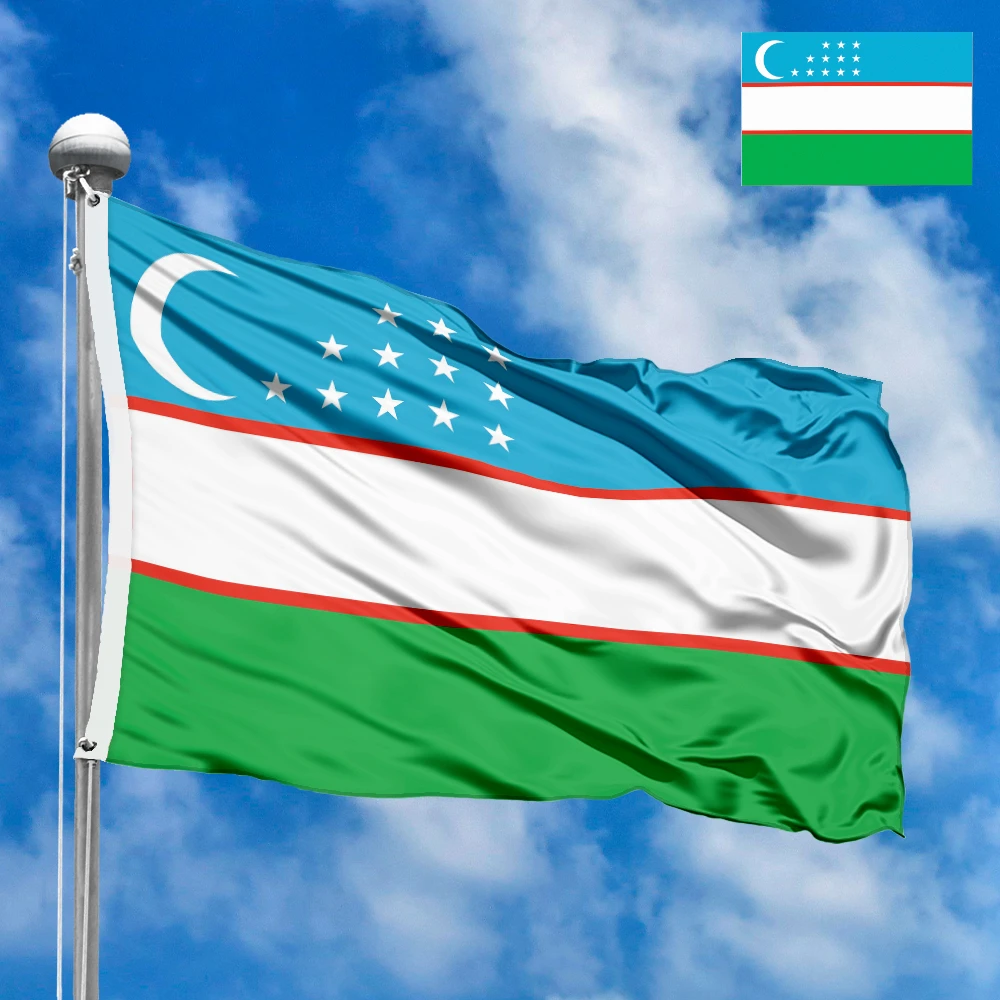

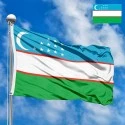
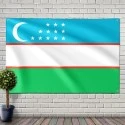
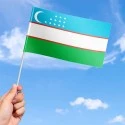

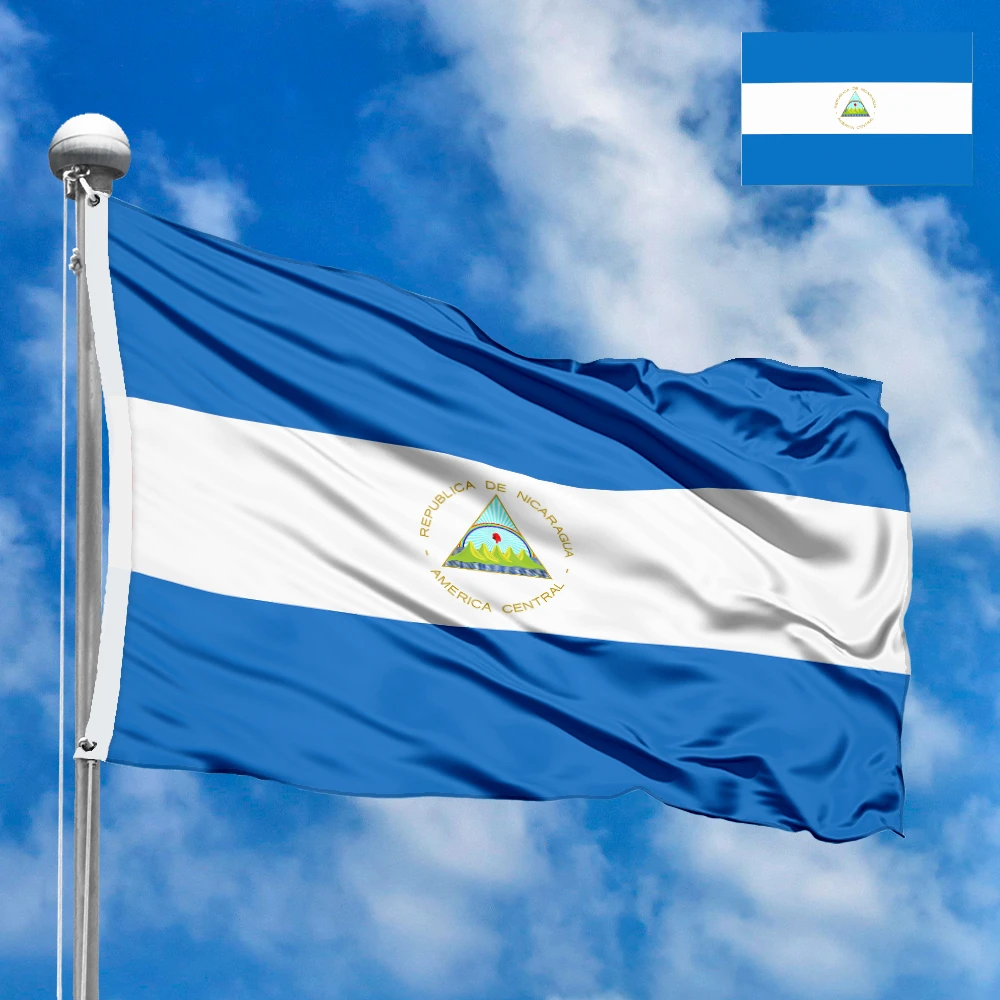
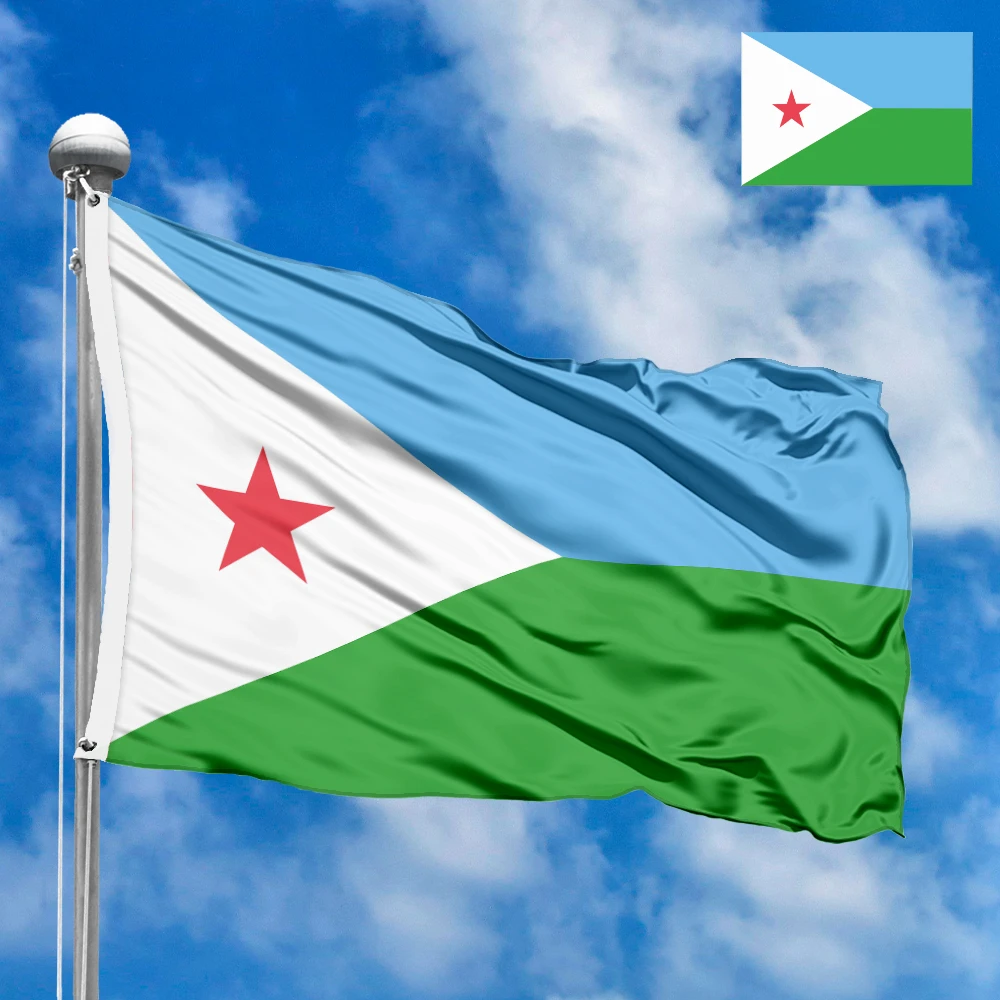
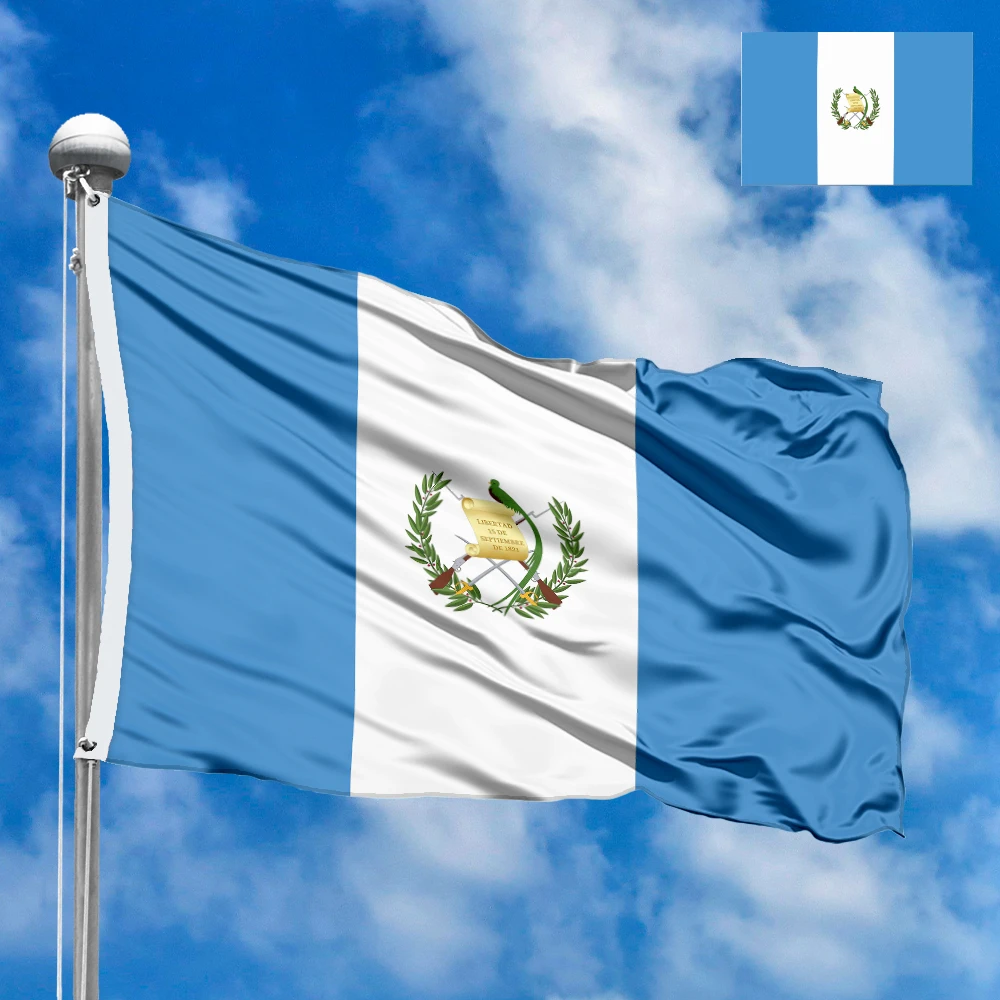




 Waving flag
Waving flag
 Sizes:
Sizes:
 Round flag
Round flag
 Sizes:
Sizes:
 Rectangular flag 2:3
Rectangular flag 2:3
 Sizes:
Sizes: